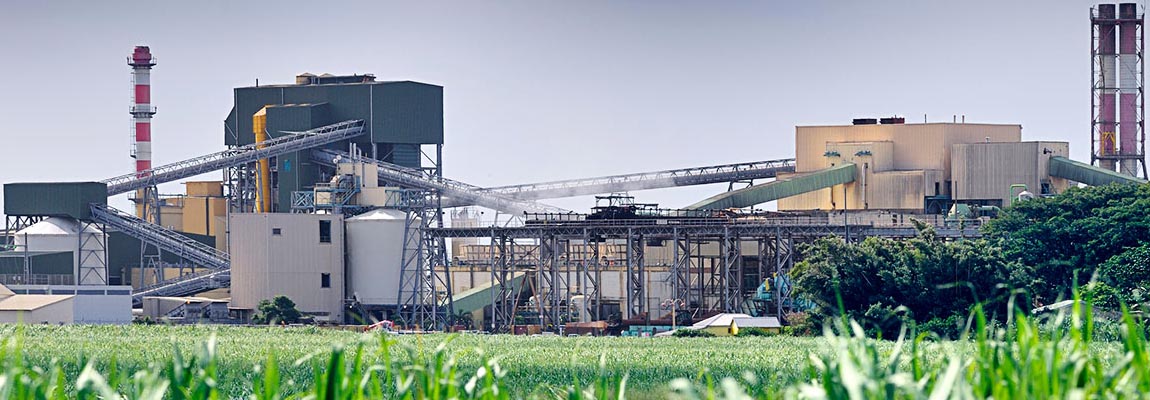Want create site? Find Free WordPress Themes and plugins.

Planting & Harvesting
- Sugarcane requires an average temperature of 75 degrees Fahrenheit (23.9 degrees Celsius) and uniform rainfall of about 80 inches (203 centimeters) per year. Therefore, it is grown in tropical or subtropical areas. Sugarcane takes about seven months to mature in a tropical area and about 12-22 months in a subtropical area.
Preparation & Processing
- After the cane arrives at the mill yards, it is mechanically unloaded, and excessive soil and rocks are removed. When the cane are delivered at the refinery, they are first washed and then cut into strips. Next, they are put into diffusion cells with water at about 175 degrees Fahrenheit (79.4 degrees Celsius) and sprayed with hot water counter currently to remove the sucrose.
Juice Extraction Pressing
- Two or three heavily grooved crusher rollers break the cane and extract a large part of the juice, or swing-hammer type shredders (1,200 RPM) shred the cane without extracting the juice. The pressing process involves crushing the stalks between the heavy and grooved metal rollers to separate the fiber (bagasse) from the juice that contains the sugar. As the cane is crushed, hot water (or a combination of hot water and recovered impure juice) is sprayed onto the crushed cane counter currently as it leaves each mill for diluting. Next, the sugar is separated from the cut stalks by dissolving it in hot water or hot juice.
Purification Of Juice — (clarification & evaporation)
- The juice from the mills, a dark green color, is acid and turbid. The clarification process is designed to remove both soluble and insoluble impurities that have not been removed by preliminary screening. The sugarcane solution, on the other hand, is purified by precipitating calcium carbonate, calcium sulfite, or both in it repeatedly. Impurities become entangled in the growing crystals of precipitate and are removed by continuous filtration. The muds separate from the clear juice through sedimentation. The final clarified juice contains about 85 percent water and has the same composition as the raw extracted juice except for the removed impurities. To concentrate this clarified juice, about two-thirds of the water is removed through vacuum evaporation. The syrup leaves the last body continuously with about 65 percent solids and 35 percent water. The sugarcane sucrose solution, at this point, is also nearly colorless, and it likewise undergoes multiple-effect vacuum evaporation. The syrup is seeded, cooled, and put in a centrifuge machine. The finished sugarcane crystals are washed with water and dried.
Crystallization
- Crystallization is the next step in the manufacture of sugar. Crystallization takes place in a single-stage vacuum pan. The syrup is evaporated until saturated with sugar. As soon as the saturation point has been exceeded, small grains of sugar are added to the pan, or “strike.” These small grains, called seed, serve as nuclei for the formation of sugar crystals. (Seed grain is formed by adding 56 ounces [1,600 grams] of white sugar into the bowl of a slurry machine and mixing with 3.3 parts of a liquid mixture: 70 percent methylated spirit and 30 percent glycerine. The machine runs at 200 RPM for 15 hours.) Additional syrup is added to the strike and evaporated so that the original crystals that were formed are allowed to grow in size. Massecuite from the mixers is allowed to flow into centrifugal, where the thick syrup, or molasses, is separated from the raw sugar by centrifugal force.
Centrifugaling
- The high-speed centrifugal action used to separate the massecuite into raw sugar crystals and molasses is done in revolving machines called centrifugals. The basket revolves at speeds from 1,000 to 1,800 RPM. The raw sugar is retained in the centrifuge basket because the perforated lining retains the sugar crystals. The mother liquor, or molasses, passes through the lining (due to the centrifugal force exerted). The final molasses (blackstrap molasses) containing sucrose, reducing sugars, organic nonsugars, ash, and water, is sent to large storage tanks. Once the sugar is centrifuged, it is “cut down” and sent to a granulator for drying. In some countries, sugarcane is processed in small factories without the use of centrifuges, and a dark-brown product (noncentrifugal sugar) is produced. Centrifugal sugar is produced in more than 60 countries while noncentrifugal sugar in about twenty countries.
Drying & Packaging
- Damp sugar crystals are dried by being tumbled through heated air in a granulator. The dry sugar crystals are then sorted by size through vibrating screens and placed into storage bins. Sugar is then sent to be packed in the familiar packaging we see in grocery stores, in bulk packaging, or in liquid form for industrial use.
Did you find apk for android? You can find new Free Android Games and apps.
